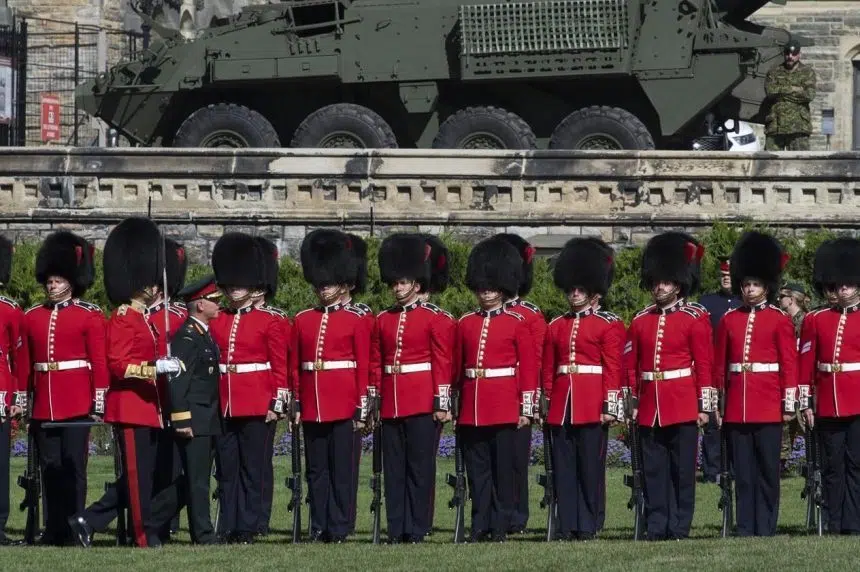OTTAWA – The federal government is predicting Canadian defence spending will inch closer to its NATO promises in the coming years than originally expected – though not because Ottawa is planning to send new money the military’s way.
All NATO members, including Canada, agreed in 2014 to work toward spending the equivalent of two per cent of their gross domestic products on defence within the next decade as the military alliance sought to share the burden of defending from new threats like Russia and China.
Two years ago, when they unveiled their defence policy, the Liberals said the government would hit 1.4 per cent by 2024-25. But Defence Minister Harjit Sajjan this week said, without providing details, that defence spending would instead reach 1.48 per cent of GDP.
An increase of that size could represent close to $2 billion more per year for the military. However, the Department of National Defence told The Canadian Press that there are no new investments on the horizon for the Canadian Armed Forces beyond what’s already in the Liberals’ policy.
Instead, Defence Department spokesman Daniel Le Bouthiller attributed the change to slower-than-expected economic growth over the next few years and more spending on non-military specific activities like veterans’ benefits and the Canadian Coast Guard.
The government has included such activities in its calculations since 2017 to try to address complaints from the U.S. and other NATO allies that Canada was not investing enough in its military. NATO approved the change.
“Approximately two-thirds of the increase from 1.40 to 1.48 per cent is due to increased (other government department) forecasts and one-third due to fluctuating GDP forecasts,” Le Bouthillier said in an email.
Canada currently spends about 1.31 per cent of GDP – a common measurement of a country’s economic output – on defence and has no plan to reach NATO’s two per cent benchmark, a fact that has made it a target for U.S. President Donald Trump.
Trump labelled Canada “slightly delinquent” on defence spending during a meeting in London last week in which he publicly grilled Prime Minister Justin Trudeau about Canada’s number before subsequently stepping up his calls for the government to meet the NATO target.
“He’s not paying two per cent and he should be paying two per cent,” Trump said during a meeting with German Chancellor Angela Merkel on Dec. 4. “It’s Canada. They have money and they should be paying two per cent.”
The Liberal government has in fact refused to say whether it believes in the two-per-cent target and has instead repeatedly pointed to Canada’s contributions of forces and equipment to NATO missions in Latvia, Iraq and other places as a better measurement of its contributions to the military alliance.
The spending target is an imperfect way of measuring how much individual countries are contributing, said Stefanie von Hlatky, an expert on NATO and the military at Queen’s University in Kingston, Ont.
But all allies are facing pressure to show Trump that they are stepping up on defence spending, she said, which is doubly true for Trudeau after his meeting with the U.S. president in London.
“I think there’s a little bit of pressure now to maybe update those numbers and probably some rejoicing that it looks better on paper,” von Hlatky said.
“If we’re looking to impress Trump with these minor adjustments, maybe it’s all for naught. But there is definitely added pressure with every NATO meeting and NATO summit. And we know it’s going to come up as long as Trump is president.”
Conservative defence critic James Bezan accused the Liberal government of playing a numbers game to make Canada look better rather than investing in the Armed Forces.
“It’s a sad state of affairs for our military heroes when Justin Trudeau can only improve defence spending figures by engineering a made-in-Canada recession and playing a shell game with other departments’ budgets to inflate the numbers,” he said.
Lee Berthiaume, The Canadian Press







